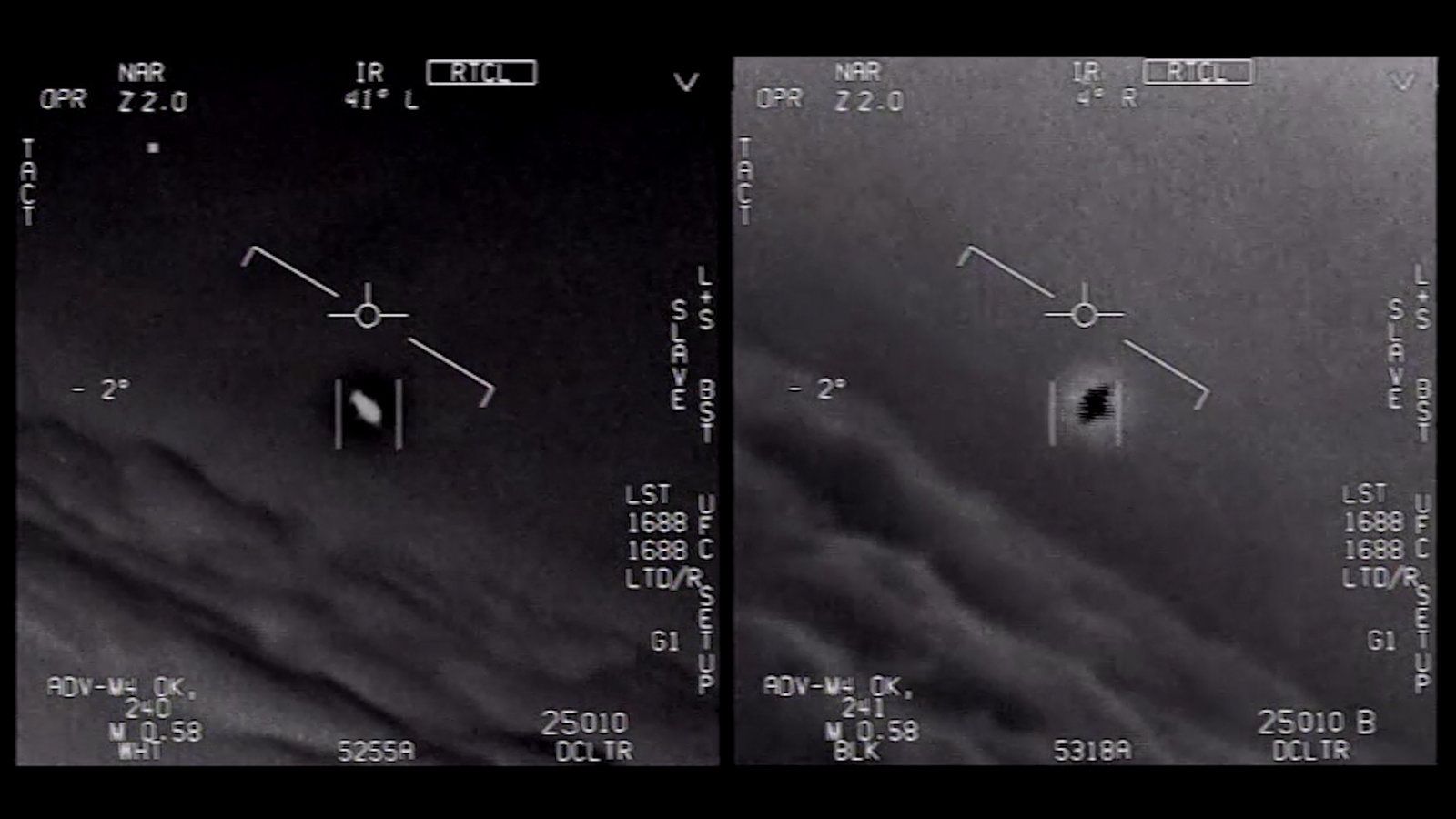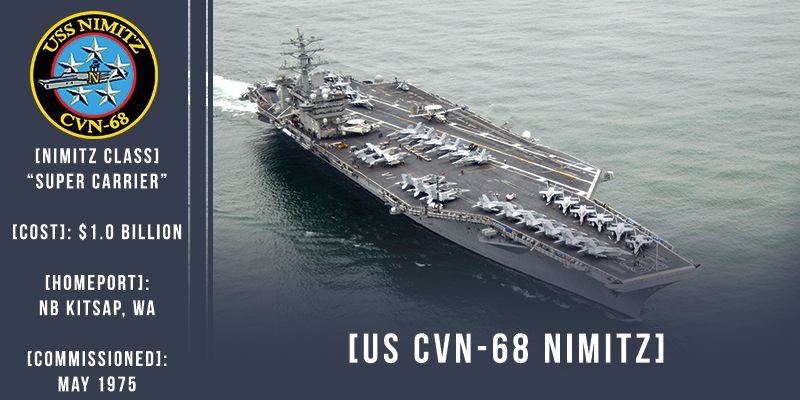Navy Pilot Who Filmed the ‘Tic Tac’ UFO: ‘It Wasn’t Behaving by the Normal Laws of Physics’
Article by Matthew Phelan December 19, 2019 (nymag.com)
• In 2017, the New York Times released a 2004 Navy jet video of a UFO over the Pacific Ocean off of the coast of San Diego as the USS Nimitz carrier group was performing military exercises. Now, the pilot of the F/A-18 Super Hornet who took the infamous video, and who first described it as a “Tic Tac” UFO, Chad Underwood, has come forward for the first time in an interview with New York Magazine’s ‘Intelligencer’.
• Here is the account by Underwood: On November 10, 2004, radar operator Kevin Day reported seeing odd, slow-moving objects flying in groups of five to ten off of San Clemente Island, west of the San Diego coast. At 28,000 feet and traveling 138 miles per hour, they were too high to be birds. The objects would zoom from 60,000 feet to hovering 50 feet above the ocean without producing a sonic boom. Radar operators with the USS Princeton spent two weeks trying to figure out what the objects were.
• Underwood’s commanding officer, David Fravor, eventually made visual confirmation of one of the objects midair during a flight-training exercise. An hour later, Fravor returned and informed Underwood of the mysterious UFO out there. On a second flight to the object’s coordinates, Underwood made his infrared recording of the ‘FLIR1’, aka “Tic Tac UFO – a 40-foot-long, white, oblong shaped craft without exhaust or conventional propulsion, even as it made a surprising dart leftward at the end of the video.
• A former fighter pilot who served on the Nimitz in 2004, who spoke on condition of anonymity, recalled an exhilarating group screening of the FLIR1 video inside the Nimitz’s intelligence center. “There weren’t really a lot of skeptics in that room,” the former pilot said. “We all wanted to fly it.”
• Marine Hornet squadron commander, Lieutenant Colonel “Cheeks” Kurth, was one of the pilots who witnessed the Tic Tac UFO, but has remained silent about the incident. He did, however, take a job as a program manager at Bigelow Advanced Aerospace Space Studies in Las Vegas, whose owner Robert Bigelow has been a well-known funder of UFO and paranormal research for decades.
• Underwood says he is glad that Dave Fravor told the story on the Joe Rogan Experience podcast. “That day, Dave Fravor was landing at the same time I was getting my gear on, and we crossed paths just after he’d seen (the UFO).” Underwood told Fravor that the Princeton’s radar was “picking up a specific object that they wanted us to hunt.” Once in the air, “all of a sudden, I got this blip on my radar. …It looked like a ‘Tic Tac’ out there in the sky.”
• “It was inside of 20 miles. You’re not going to see it with your own eyes until probably 10 miles, and then you’re not going to be able to visually track it until you’re probably inside of 5 miles, which is where Dave Fravor saw it.” At that point Underwood was tracking it on the FLIR radar, and making sure that the videotape was on.
• “The thing that stood out to me the most,” said Underwood, “was how erratic it was behaving . …[I]ts changes in altitude, air speed, and aspect were just unlike things that I’ve ever encountered before… in ways that aren’t physically normal. … They have to have some source of lift, some source of propulsion. The Tic Tac was not doing that. It was going from like 50,000 feet to, you know, a hundred feet in like seconds, which is not possible.” “The video shows a source of heat, but the normal signatures of an exhaust plume were not there. There was no sign of propulsion.”
• “[T]his was not a weather balloon — because a balloon, it just ascends and floats from low to high altitude; it doesn’t behave erratically. I mean, it’s just a damn balloon. So that was out of the question.” “It wasn’t — to the best of my knowledge — a cruise missile or any other kind of test aircraft that we possibly may have not known about, just because of the way it was behaving.”
• Once he landed back on the carrier, Underwood saw one of his buddies from a sister squadron and they put the video tapes into the playback machine in the intelligence center. “Those little video cuts— that you see of my FLIR recording — were taken there at the intelligence center,” said Underwood.
• “[P]robably within about 20 minutes or so, I spoke to someone that I assume was from NORAD. I described it exactly as I just told you. I didn’t get debriefed.” Normally “we would get debriefed on it, …and, basically, ‘This is what you saw. Don’t talk about it.’ That never happened, which leads me to think that it was not a government project.” “I’ve got top-secret clearance with a ton of special-project clearances.” But “if it was a government project, I did not (have a) need to know.”
• “I’ve never said that this is what I think it was or speculate as to what I think it was. That’s not my job. But I saw something. And it was also seen, via eyeballs, by both my commanding officer, Dave Fravor, and the Marine Corps Hornet squadron commanding officer who was out there as well.” “It’s funny, seeing your boss’s name and face on the news.” “[E]verything that Dave has put out there in the interviews is absolutely, 100 percent, exactly what happened on that day. And we’re still good friends to this day.”
• “I’ll let the nerds… do the math on what it was likely to be. I just happened to be the person that brought back the video.”
In the 15 years since Chad Underwood recorded a bizarre and erratic UFO — now called “the Tic Tac,” a name Underwood himself came up with — from the infrared camera on the left wing of his F/A-18 Super Hornet, he’s become a flight instructor, a civilian employee in the aerospace industry, and a father. But he has not yet spoken publicly about what he saw that day, even now, two years after his video made the front page of the New York Times. As he explained before speaking with Intelligencer, Underwood has mostly wanted to avoid having his name “attached to the ‘little green men’ crazies that are out there.”

The story of the Tic Tac begins around November 10, 2004, when radar operator Kevin Day first reported seeing odd and slow-moving objects flying in groups of five to ten off of San Clemente Island, west of the San Diego coast. At an elevation of 28,000 feet, moving at a speed of approximately 120 knots (about 138 miles per hour), the clusters were too high to be birds, too slow to be conventional aircraft, and were not traveling on any established flight path, at least according to Day.
In a military report made public by KLAS-TV in Las Vegas, Day would later observe that the objects “exhibited ballistic-missile characteristics” as they zoomed from 60,000 feet to 50 feet above the Pacific Ocean, alarmingly without producing sonic booms. All told, radar operators with the Princeton spent about two weeks attempting to figure out what the objects were, a process that included having the ship’s radar system shut down and recalibrated to make sure that the mysterious radar returns were not not false positives, or “ghost tracks.”
Eventually, David Fravor, commanding officer of the Black Aces, made visual confirmation of one of the objects midair during a flight-training exercise. An hour later, Underwood made his infrared recording on a second flight. “That day,” Underwood recalls, “Dave Fravor was like, ‘Hey, dude. BOLO.’ Like, be on the lookout for just something weird. I can’t remember the exact terms that he used. I didn’t really think much about it at the time. But once I was able to acquire it on the radar and on the FLIR [forward-looking infrared camera], that’s kind of where things — I wouldn’t say ‘went sideways’ — but things were just different.”
 The footage appears to depict what Fravor had identified as a 40-foot-long, white, oblong shape (hence “Tic Tac”), hovering somewhere between 15,000 and 24,000 feet in midair and exhibiting no notable exhaust from conventional propulsion sources, even as it makes a surprising dart leftward in the video’s final moments. Of the three UFO incidents captured by U.S. Navy airmen via infrared gun-camera pods, Underwood’s footage remains unique for its lack of cross talk between the pilots — a fact that has led to some speculation about its authenticity. But “there wasn’t anything on it that was protected,” Underwood’s retired former commanding officer Dave Fravor told Intelligencer. The missing audio, he says, “just didn’t make the copy that was taken from the storage drive.”
The footage appears to depict what Fravor had identified as a 40-foot-long, white, oblong shape (hence “Tic Tac”), hovering somewhere between 15,000 and 24,000 feet in midair and exhibiting no notable exhaust from conventional propulsion sources, even as it makes a surprising dart leftward in the video’s final moments. Of the three UFO incidents captured by U.S. Navy airmen via infrared gun-camera pods, Underwood’s footage remains unique for its lack of cross talk between the pilots — a fact that has led to some speculation about its authenticity. But “there wasn’t anything on it that was protected,” Underwood’s retired former commanding officer Dave Fravor told Intelligencer. The missing audio, he says, “just didn’t make the copy that was taken from the storage drive.”
A former fighter pilot who served on the Nimitz in 2004, who spoke to Intelligencer on condition of anonymity, recalled an exhilarating group screening of the FLIR1 video inside the Nimitz’s Carrier Vehicle Intelligence Center (CVIC): “Debriefs were usually pro forma in the CVIC, but this one in particular was so odd,” the former pilot said. “There weren’t really a lot of skeptics in that room.” Years later, Fravor told ABC News that he didn’t know what the Tic Tac was, but that “it was really impressive, really fast, and I would like to fly it.” In the CVIC that day, the anonymous pilot told Intelligencer, “We all had that. We all wanted to fly it.”
Of the many people to have spotted or recorded the objects, a handful, like Fravor or Princeton’s (retired) Chief Master-at-Arms Sean Cahill, who reported seeing what appeared to be another grouping of the objects from the missile cruiser’s deck, have spoken to journalists or documentarians. Others have not: Lieutenant Colonel “Cheeks” Kurth, a Marine Hornet squadron commanding officer who was also asked to intercept the Tic Tac, still has not done an on-the-record interview. (Three years after the sighting, however, Kurth did take a job as a program manager at Bigelow Advanced Aerospace Space Studies in Las Vegas, whose owner Robert Bigelow has been a well-known private funder of UFO and paranormal research for decades. It was during this same period that Bigelow became a military contractor working on the Pentagon’s once-secret UFO investigation program, the Advanced Aerospace Threat Identification Program.)
Underwood now joins Fravor, Cahill, and others, in speaking about his experience with the Tic Tac. This conversation has been condensed and edited for clarity.
FAIR USE NOTICE: This page contains copyrighted material the use of which has not been specifically authorized by the copyright owner. ExoNews.org distributes this material for the purpose of news reporting, educational research, comment and criticism, constituting Fair Use under 17 U.S.C § 107. Please contact the Editor at ExoNews with any copyright issue.






